Content
- 1 Is rabbit droppings used as fertilizer?
- 2 Composition of rabbit manure
- 3 Pros and cons of using rabbit manure
- 4 Rabbit manure processing
- 5 How to use rabbit manure to fertilize your garden
- 6 Features of using rabbit droppings
- 7 How to use rabbit manure in the garden correctly
- 8 Conclusion
- 9 Reviews of rabbit manure as a fertilizer
Rabbit droppings are used much less frequently as plant food than other types of pet waste. This is partly due to its small amount, because furry animals produce much less of it than, for example, a cow or horse. However, if necessary and in sufficient quantities, using rabbit manure as a fertilizer is quite possible if you follow certain rules.
Is rabbit droppings used as fertilizer?
Pet excrement has been used to fertilize garden beds since time immemorial.Cattle and horse manure are best suited for this purpose. Other types of litter are used less frequently, although they can also be used in this capacity after some preparation. Rabbit manure also falls into this category.
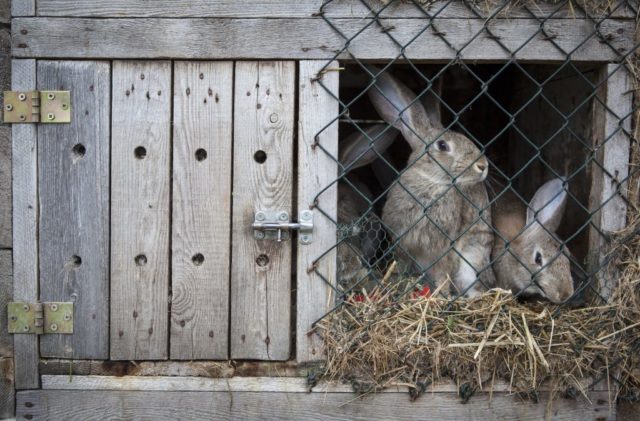
Rabbits are not only valuable fur, but also... 100-150 kg of manure per year
On private farmsteads, where the number of rabbits is low, a small amount of litter is produced, and its disposal, as a rule, is not a problem. However, in specialized farms, where the number of these animals is measured in hundreds and thousands, quite a lot of rabbit manure can accumulate.
Composition of rabbit manure
As a percentage of rabbit manure, the amount of nutrients valuable for plants is distributed as follows (as a percentage of the total mass):
- Nitrogen – 0.6.
- Potassium – 0.7.
- Magnesium – 0.7.
- Phosphorus – 0.6.
- Calcium – 0.4.
As can be seen from the list, rabbit droppings are a fairly balanced fertilizer, in which there is no predominance of any macronutrient. In addition, manure contains about 60% organic matter, it contains elements such as manganese, sodium, iron and some others.
What are the benefits of rabbit manure for the garden?
The main benefit of applying rabbit manure is to increase soil fertility. In addition, this fertilizer improves the structure of the soil and increases its breathability. Unprocessed organic residues attract a large number of earthworms, which loosen the soil and contribute to the formation of a layer of humus.
Pros and cons of using rabbit manure
In addition to the balanced composition of macroelements, rabbit manure has several other positive properties:
- It is of the “hot” type, i.e., it releases heat during decomposition. This can be used when arranging so-called “warm” beds.
- Goes well with other types of manure.
- Does not contain weed seeds, since rabbits do not eat them.
- Excellent soil loosening.
- Easily compostable.
- Can be used in any form.
- It is easy to assemble and store.
- Has an initial low humidity.
- Can be used as a fertilizer to feed any plants.

Clean rabbit droppings look like small pellets
Rabbit litter has significantly fewer disadvantages. They are connected with the fact that it is dangerous to use excrement in its pure form to feed plants, since it can cause burns to the root system. Therefore, such manure must first be diluted or composted. If you neglect this rule, then you may simply lose the harvest.
Rabbit manure processing
Since it is risky to use fresh rabbit manure as a fertilizer in its pure form, gardeners use the following methods to reduce the negative impact of manure on plants:
- Composting.
- Grinding.
- Infusion.
- Preparation of humus.
After preliminary preparation, rabbit manure turns into a complete fertilizer, practically devoid of negative properties.
Composting
Composting is a natural process in which organic residues are rotted, losing their harmful factors. To obtain compost, you need to dig a shallow hole in the ground, at the bottom of which lay a layer of fallen leaves or peat.Then organic matter is laid there in layers, alternating rabbit manure with straw or grass. Periodically, this pile needs to be stirred, and if it dries out, it needs to be moistened. If done correctly, the compost will heat up from the inside, which will lead to accelerated decomposition of both manure and organic matter.
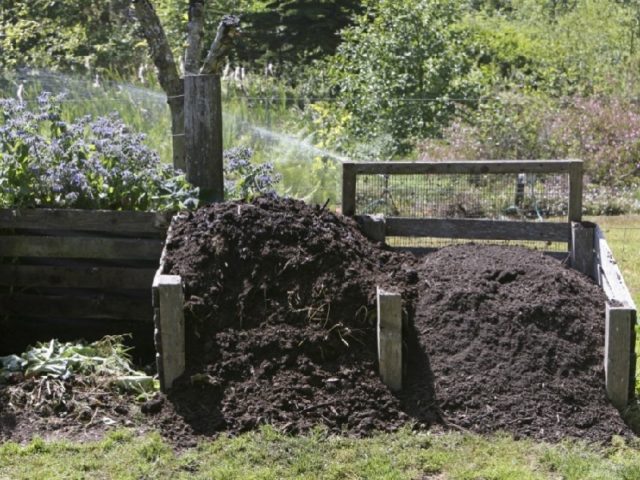
All organic residues on the site can be turned into valuable fertilizer - compost.
It usually takes about six months for compost to fully mature. After this, the fertilizer can be used. Most often, compost is used in spring or autumn, spreading it over the area before plowing.
Powder
Dried rabbit droppings lose their activity, but do not lose their beneficial properties. For use or storage, dry excrement is ground into a fine powder. It is best to use it as a fertilizer when planting or replanting flowers, mixing the powder in a 1:3 ratio with garden soil.
Infusion
Rabbit droppings in the form of an infusion are usually used as a quickly digestible root fertilizer. To prepare it, rabbit droppings need to be poured with water in a ratio of 1:15, and then allowed to brew for at least 10 days for it to ferment. Since this fertilizer contains quite a lot of nitrogen, it is used only at the beginning of the gardening season in order to stimulate the rapid growth of green mass. Fruit trees also respond well to this feeding.
Preparing humus
Completely rotted compost from rabbit excrement over time turns into humus - a nutrient substrate that can be used without restrictions to improve the characteristics of the soil and increase its fertility. However, under normal conditions this takes several years, and not all gardeners are willing to wait that long. You can speed up the process by adding a large number of worms to the compost heap.
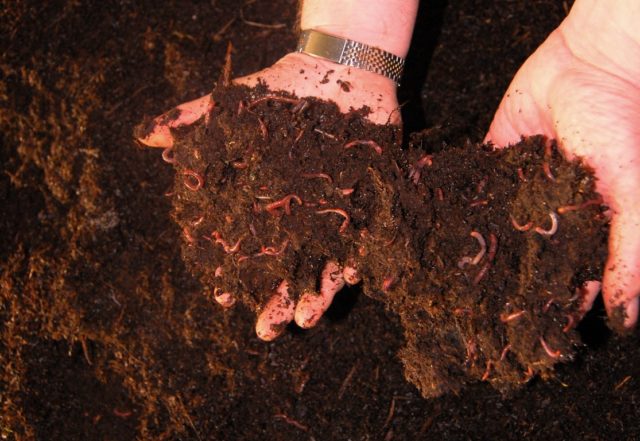
Humus is a completely processed organic matter
Ready humus can be plowed into the soil or used as mulch.
How to use rabbit manure to fertilize your garden
In the garden, rabbit droppings are used for various feedings, most often root feeding. Both pure manure and its various combinations with the droppings of other animals, as well as with bedding straw, are used as fertilizer.
Ways to use rabbit manure in the garden
Depending on the age and condition of the rabbit droppings, you can use it as fertilizer in the garden in the following ways:
- To increase productivity and improve soil structure, compost is spread in the garden before winter and plowed into the soil in the spring.
- When planting and replanting garden plants, mature compost and humus can be added directly into the planting hole, mixing it with turf soil.
- An infusion of rabbit manure is used for quick root and foliar feeding.
- Rabbit droppings mixed with other types of manure can be used to create “warm” beds in greenhouses and greenhouses.
- Litter manure mixed with straw is used to mulch the root zone of trees and shrubs.
When can you fertilize your garden with rabbit manure?
It is more advisable to use rabbit manure at the beginning of the season, since such fertilizer has a high content of easily digestible nitrogen. From mid-summer, it is no longer used for feeding fruit crops, vegetables, and root crops; this will protect them from the accumulation of nitrates. You can fertilize ornamental plants and flowers. In the fall, rabbit manure is not used; it is simply scattered around the site.
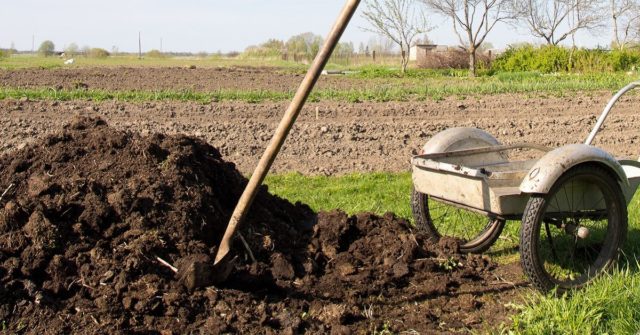
Most often, rabbit manure is plowed into the ground in the spring.
During the winter it will lose activity, and in the spring, during plowing, the fertilizer will fall directly into the soil.
What plants can be fertilized with rabbit manure?
Rabbit droppings can be used to feed any type of plant. Most often, this fertilizer is applied to indoor flowers, ornamental, fruit and berry trees and shrubs. You can use rabbit manure to improve the characteristics of the soil under planting potatoes, tomatoes, and eggplants.
Features of using rabbit droppings
When using rabbit droppings as fertilizer, many factors must be taken into account, such as the age of the manure itself, its degree of decomposition, condition, and purity. Depending on this, the dosage of the substance is calculated and the method of its application is determined. The seasonal factor must be taken into account, since for some plants such fertilizer can only be applied during a certain growing season.
For indoor plants and flowers
For indoor plants and flowers, you can use both dry fertilizer and its aqueous infusion. Apply this fertilizer as follows:
- When planting and transplanting. For 3 kg of soil add 1 tbsp. l.dry powdery rabbit droppings. The components are mixed together to form a nutrient substrate, into which they are then planted.
- For active growth. Rabbit droppings are mixed with wood ash 1:1 and infused in water for at least 10 days. Subsequently, the resulting infusion is diluted 1:10, and then the root zone is carefully irrigated.
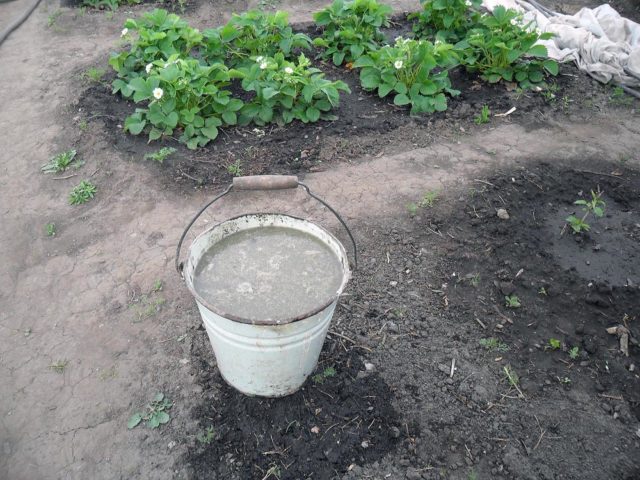
Liquid fertilizer based on rabbit manure can be used for many garden crops
For vegetable crops
To increase the yield of any vegetable crops, you can use rabbit droppings in composted form or in the form of humus. The finished fertilizer is spread on the surface of the beds or around the site in the fall, and in the spring it is incorporated into the soil when digging or plowing. The recommended application rate is 2 kg per 1 sq. m.
For fruit and berry crops
Compost or humus obtained from rabbit droppings can also be used to feed fruit trees. In this case, it is evenly embedded in the soil during the autumn digging of tree trunk circles. For each mature fruit tree, add up to 10 kg of compost or humus. You can also use fertilizer in liquid form by pouring the infusion of rabbit manure into special grooves made in the root zone.

Composted rabbit droppings are applied to fruit trees in the fall.
Rabbit droppings in the form of infusion, compost or humus can also be used to feed berry bushes. Litter manure containing straw is especially suitable for this. In late autumn, they mulch the root zone of shrubs; this serves as additional protection for the roots from freezing. During the winter, the fertilizer completely decomposes, enriching the soil with nutrients and microelements.
For garden flowers and ornamental shrubs
Perennial garden flowers and ornamental shrubs are usually fed with an infusion of rabbit manure diluted in water. This can be done several times during the season:
- In early spring, before the start of the growing season.
- During the period of active growth, before the budding phase.
- Late autumn, after the end of the growing season.
Roses, decorative honeysuckle, chrysanthemums and many other plants are fed in this way.
How to use rabbit manure in the garden correctly
Long-term practice of using rabbit manure to feed garden plants confirms that the use of this fertilizer is effective and safe, if the permissible concentrations are not exceeded. The best option for its preparation is composting for a year, or better yet 2 years. During this time, the excrement decomposes completely, turning into complete humus. The use of such fertilizer will not have any negative consequences.
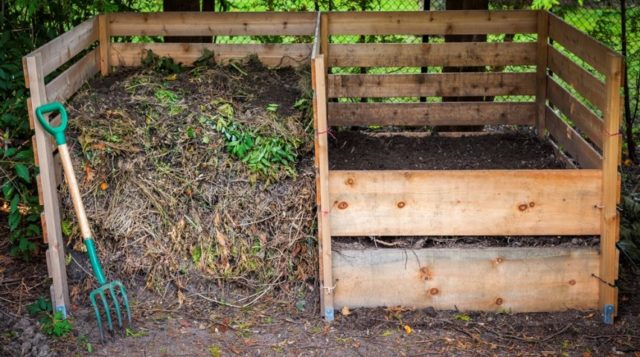
A multi-section compost pit will allow you to separate organic matter depending on the ripening period
In order for the process of decomposition of organic residues in the compost heap to proceed continuously, the place for its placement should be chosen in the shade. This will prevent drying out. Periodically, the pile should be watered, after which it is better to cover it on top with a dark film or piece of tarpaulin.After the active decomposition of organic matter has ended and the temperature inside the compost heap has dropped, the cover can be removed.
Rabbit droppings mixed with cattle manure are excellent for heating beds. This is a very useful property for lovers of greenhouse farming. Arranging “warm” beds in greenhouses and greenhouses allows you to plant seedlings much earlier than usual, and this directly affects productivity.
Conclusion
It is possible and necessary to use rabbit manure as fertilizer. It has a balanced composition, suitable for almost all garden crops. Rabbit droppings are easy to collect and store and can be easily and quickly composted without taking up much space or cost. At the same time, the effectiveness of its use is very high, as evidenced by numerous positive reviews from gardeners and gardeners.
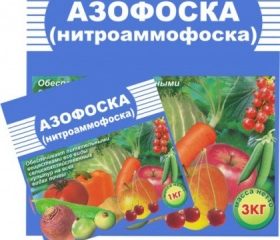
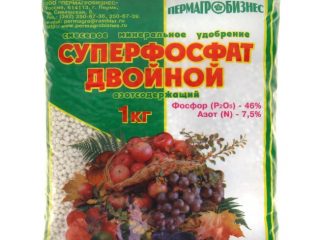
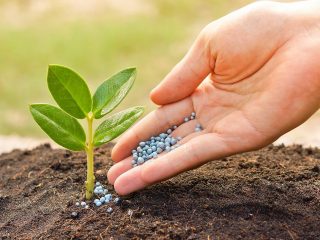

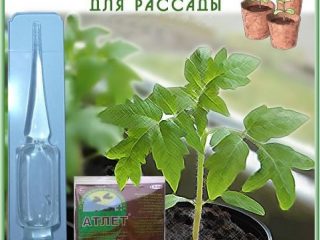
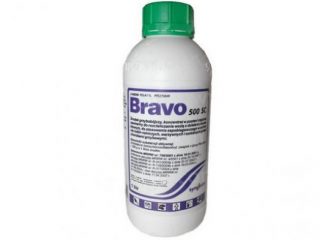
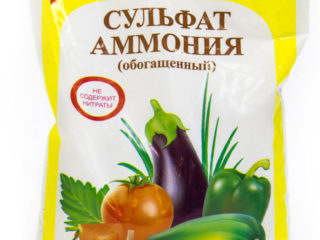
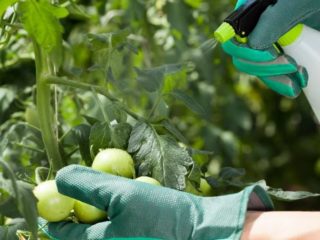
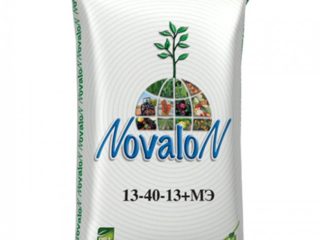
I'm looking for advice on how to speed up the process of composting rabbit droppings mixed with straw.
Good afternoon.
The following methods will help speed up the composting process:
• Laying droppings mixed with straw and grass in layers. There should not be too much straw (no more than 50-70% of the volume of rabbit droppings). Large amounts of straw slow down the composting process.
• Straw can be chopped to speed up composting.
• Regularly moisten the compost heap with water. Do not fill it, but rather moisten it.
• Cover the compost pile with leftover leaves, dried grass or other plant debris. A layer of mulch will help maintain the temperature in the inner layers of the compost pile. During the cold season, you can cover the compost heap with film to retain heat.
• Add biological products that speed up the decomposition process. For example, Biohumus, bioactivator “BIOSREDA”, biological product for processing litter, manure “Bioseptilon”, Compostin, Baikal, Compostar and many others. Recently, many such drugs have appeared. Activators are diluted in water, and the prepared solution is watered onto compost heaps. More detailed instructions are provided on the packaging.
• In the summer, earthworms are added between the layers to speed up composting when laying the pile.
You can also use traditional methods to speed up the composting of rabbit droppings:
• Yeast. Dilute 100 g of yeast and 200 g of sugar in 10 liters of water. When fermentation begins, water the compost heap with this yeast mass.
• Nitrogen. If you have a lot of straw, but little droppings, when laying the compost heap, sprinkle a thin layer (about a handful of fertilizer per 1 m²) of urea or other nitrogen fertilizer every 20-30 cm. Or dilute nitrogen fertilizer in water (1-2 tablespoons per bucket of water) and water the pile with this solution once a month.
And don't forget to water your compost pile regularly.